What Causes Gallbladder Failure: Cholecystitis – Symptoms and Causes
What causes gallbladder failure? What are the symptoms and causes of cholecystitis, a common gallbladder disorder?
Understanding Gallbladder Function and Dysfunction
The gallbladder is a small, pear-shaped organ located under the liver. Its primary function is to store and concentrate bile, a fluid produced by the liver to aid in the digestion of fats. As food passes through the stomach and intestines, the gallbladder releases bile through a tube called the common bile duct, which connects the gallbladder and liver to the small intestine.
Gallbladder problems often arise when the flow of bile through the bile ducts is blocked, typically by the formation of gallstones. Gallstones are hardened deposits of substances found in bile, such as cholesterol and bilirubin. In rare cases, gallbladder cancer can also occur.
Cholecystitis: Inflammation of the Gallbladder
Cholecystitis is a common gallbladder disorder characterized by inflammation of the gallbladder. This condition is most often caused by gallstones blocking the cystic duct, which leads to the buildup of bile and subsequent inflammation.
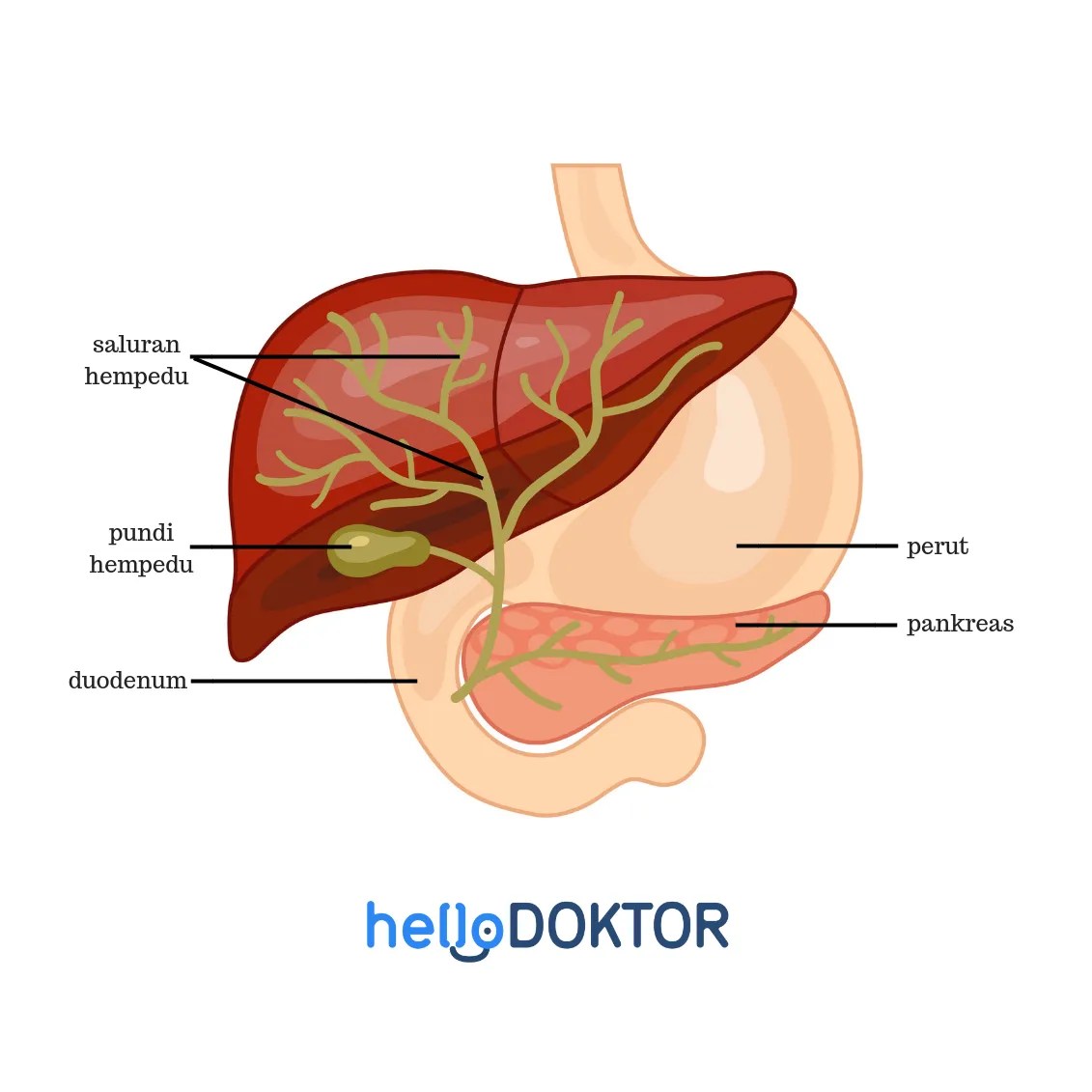
Symptoms of Cholecystitis
The primary symptoms of cholecystitis include:
- Sudden and severe pain in the upper right or middle part of the abdomen, often radiating to the back or right shoulder
- Nausea and vomiting
- Fever and chills
- Tenderness or fullness in the upper right abdomen
Causes of Cholecystitis
The most common cause of cholecystitis is the presence of gallstones. Other potential causes include:
- Bile duct obstruction: Blockages in the bile ducts can lead to bile buildup and inflammation in the gallbladder.
- Trauma or injury: Physical trauma to the abdomen can cause inflammation of the gallbladder.
- Infection: Bacterial or viral infections can also result in gallbladder inflammation.
- Underlying medical conditions: Conditions like diabetes, pregnancy, and rapid weight loss can increase the risk of developing cholecystitis.
Diagnosing Cholecystitis
To diagnose cholecystitis, healthcare providers will typically perform a physical examination, ask about symptoms, and order one or more of the following tests:

- Abdominal ultrasound: This imaging test can detect the presence of gallstones and evaluate the gallbladder’s condition.
- CT scan or MRI: These imaging tests can provide more detailed information about the gallbladder and surrounding structures.
- Blood tests: Blood tests may reveal elevated white blood cell counts, which can indicate inflammation.
Treating Cholecystitis
The primary treatment for cholecystitis is to address the underlying cause, such as gallstones. Depending on the severity of the condition, the following treatment options may be recommended:
- Medication: Anti-inflammatory drugs, antibiotics, and pain relievers may be prescribed to manage symptoms and treat any underlying infection.
- Gallbladder removal (cholecystectomy): In many cases, the gallbladder may need to be surgically removed, particularly if the condition is recurrent or severe.
- Nonsurgical procedures: In some cases, nonsurgical procedures, such as gallstone dissolution with medications or gallbladder drainage, may be an option.
Preventing Gallbladder Problems
While some gallbladder issues are unavoidable, there are steps individuals can take to reduce the risk of developing gallbladder problems:
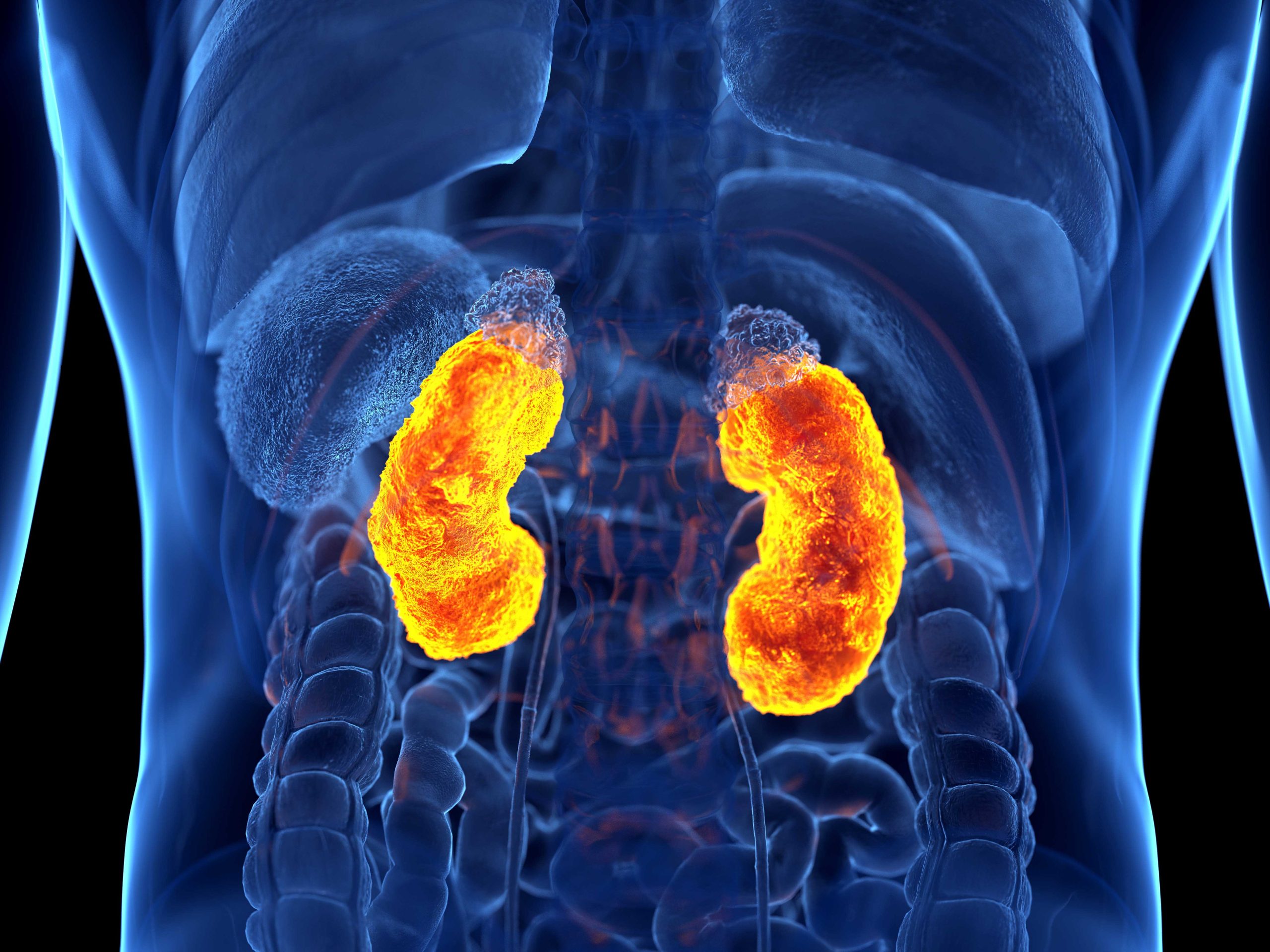
- Maintain a healthy weight: Excess weight, rapid weight loss, and obesity are risk factors for gallstone formation.
- Eat a balanced diet: A diet rich in fiber and low in saturated and trans fats can help prevent gallstone formation.
- Manage underlying health conditions: Conditions like diabetes and high cholesterol can increase the risk of gallbladder problems and should be properly managed.
- Stay physically active: Regular exercise can help maintain a healthy weight and reduce the risk of gallbladder issues.
Gallbladder Removal and Life After Cholecystectomy
In many cases, the gallbladder may need to be surgically removed, a procedure known as a cholecystectomy. While the gallbladder is an important organ, its removal does not significantly impact a person’s ability to digest food or live a healthy life.
After gallbladder removal, bile can still reach the small intestine through alternative routes, and the body can often adapt to the absence of the gallbladder. Some individuals may experience minor digestive changes, such as loose stools or diarrhea, but these issues usually resolve over time.

Conclusion
Gallbladder problems, such as cholecystitis, are commonly caused by the formation of gallstones that block the flow of bile. Symptoms of cholecystitis include sudden and severe abdominal pain, nausea, vomiting, and fever. While medication and nonsurgical procedures can sometimes address the issue, in many cases, the gallbladder may need to be surgically removed. By understanding the causes, symptoms, and treatment options for gallbladder problems, individuals can work with their healthcare providers to manage and prevent these conditions effectively.
Gallbladder Disease | MedlinePlus
On this page
Basics
- Summary
- Start Here
- Diagnosis and Tests
- Treatments and Therapies
Learn More
- Living With
- Related Issues
- Specifics
See, Play and Learn
- No links available
Research
- Clinical Trials
- Journal Articles
Resources
- Reference Desk
- Find an Expert
For You
- Patient Handouts
Your gallbladder is a pear-shaped organ under your liver. It stores bile, a fluid made by your liver to digest fat. As your stomach and intestines digest food, your gallbladder releases bile through a tube called the common bile duct. The duct connects your gallbladder and liver to your small intestine.
It stores bile, a fluid made by your liver to digest fat. As your stomach and intestines digest food, your gallbladder releases bile through a tube called the common bile duct. The duct connects your gallbladder and liver to your small intestine.
Your gallbladder is most likely to give you trouble if something blocks the flow of bile through the bile ducts. That is usually a gallstone. Gallstones form when substances in bile harden. Rarely, you can also get cancer in your gallbladder.
Many gallbladder problems get better with removal of the gallbladder. Fortunately, you can live without a gallbladder. Bile has other ways of reaching your small intestine.
Biliary Tract Disorders, Gallbladder Disorders, and Gallstone Pancreatitis
(American College of Gastroenterology)
Also in Spanish
Overview of Gallbladder and Bile Duct Disorders
(Merck & Co.
 , Inc.)
, Inc.)Also in Spanish
Abdominal Ultrasound
(American College of Radiology; Radiological Society of North America)
Also in Spanish
ERCP (Endoscopic Retrograde Cholangiopancreatography)
(National Institute of Diabetes and Digestive and Kidney Diseases)
Also in Spanish
Laparoscopy
(National Library of Medicine)
Also in Spanish
Nuclear Medicine — Hepatobiliary
(American College of Radiology; Radiological Society of North America)
Also in Spanish
Understanding EUS (Endoscopic Ultrasonography)
(American Society for Gastrointestinal Endoscopy)
Also in Spanish
Gallbladder Removal: Laparoscopic Method
(American Academy of Family Physicians)
Also in Spanish
Understanding ERCP (Endoscopic Retrograde Cholangiopancreatography)
(American Society for Gastrointestinal Endoscopy)
Also in Spanish
Diet after Gallbladder Removal
(Mayo Foundation for Medical Education and Research)
Also in Spanish
Sphincter of Oddi Dysfunction
(Cleveland Clinic Foundation)
Cholecystitis
(Mayo Foundation for Medical Education and Research)
Also in Spanish
Gallbladder Polyps: Can They Be Cancerous?
(Mayo Foundation for Medical Education and Research)
Also in Spanish
ClinicalTrials.
 gov: Cholecystectomy
gov: Cholecystectomy(National Institutes of Health)
ClinicalTrials.gov: Gallbladder Diseases
(National Institutes of Health)
Article: Can the parkland grading scale predict the difficulty of laparoscopic cholecystectomy?.
 ..
..Article: Hematoma post-endoscopic retrograde cholangiopancreatography.
Article: Acute Hemorrhagic Cholecystitis Due to Gallbladder Volvulus.

Gallbladder Diseases — see more articles
Gallbladder and Biliary Tract
(Merck & Co.
 , Inc.)
, Inc.)Also in Spanish
National Institute of Diabetes and Digestive and Kidney Diseases
Disorders of the Liver and Gallbladder in Dogs – Dog Owners
The liver is an organ that performs numerous functions. It has a large storage capacity and functional reserve and is capable of regenerating. These properties provide some protection against permanent damage. However, the liver is also susceptible to injury because of its role in metabolizing, detoxifying, and storing various toxic compounds.
It has a large storage capacity and functional reserve and is capable of regenerating. These properties provide some protection against permanent damage. However, the liver is also susceptible to injury because of its role in metabolizing, detoxifying, and storing various toxic compounds.
Signs that a dog has liver disease can vary and include loss of appetite, vomiting, stomach ulceration, diarrhea, seizures or other neurologic problems, fever, blood clotting problems, jaundice (a yellow tinge noticeable in the skin, mucous membranes, and eyes), fluid collection in the abdomen, excessive urination and thirst, changes in liver size, and weight loss. Gastrointestinal bleeding can be seen in animals with liver disease due to ulcers or problems with blood clotting. The veterinarian’s understanding of the potential causes of each of these signs helps him or her to diagnose illness and provide appropriate treatment.
A variety of blood tests can be useful in detecting and diagnosing liver disease.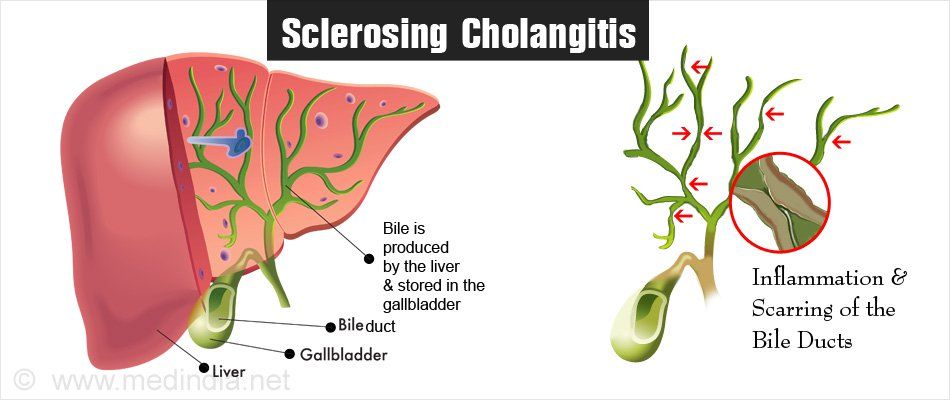 X‑rays and ultrasonography can help your veterinarian determine liver size and find irregularities, gallstones, and diseases of the gallbladder. Aspiration or biopsy procedures can be used to obtain samples for bacterial culture, cell and tissue analysis, and, when appropriate, toxicologic analysis. Other, less common tests, such as nuclear scintigraphy, may be used in some cases to identify portosystemic shunts (see below) and other blood vessel abnormalities.
X‑rays and ultrasonography can help your veterinarian determine liver size and find irregularities, gallstones, and diseases of the gallbladder. Aspiration or biopsy procedures can be used to obtain samples for bacterial culture, cell and tissue analysis, and, when appropriate, toxicologic analysis. Other, less common tests, such as nuclear scintigraphy, may be used in some cases to identify portosystemic shunts (see below) and other blood vessel abnormalities.
Liver, gallbladder, and pancreas of a dog
Early treatment is critical for dogs with acute liver failure. Your veterinarian will prescribe specific treatment if an underlying cause be identified. In cases of longterm or end-stage liver disease, and in cases of acute liver disease when no under-lying cause has been identified, supportive treatment is directed at slowing progression of disease, minimizing complications, and allowing time for the liver to regenerate and compensate.
The diet usually recommended for dogs with liver disease should include enough calories to maintain a normal weight. Protein restriction is usually required only for dogs that are at risk of developing hepatic encephalopathy. Follow the specific advice provided by your veterinarian. It may be best to feed small, frequent meals. Dogs that refuse to eat may require tube feeding.
Prescribed supplements may include B vitamins, vitamin K, and vitamin E. Low potassium levels and decreased levels of B vitamins are common complications with liver disease, and supplementation is often recommended. Vitamin C does not appear to become depleted in dogs with liver disease, and supplementation is not recommended in dogs with copper storage liver disease. Injections of vitamin K are sometimes given to dogs with bleeding tendencies. Follow your veterinarian’s recommendations on vitamin supplementation because overdoses of some vitamins can be harmful.
Acute liver failure results in sudden loss of liver function, which is often associated with neurologic signs and clotting abnormalities.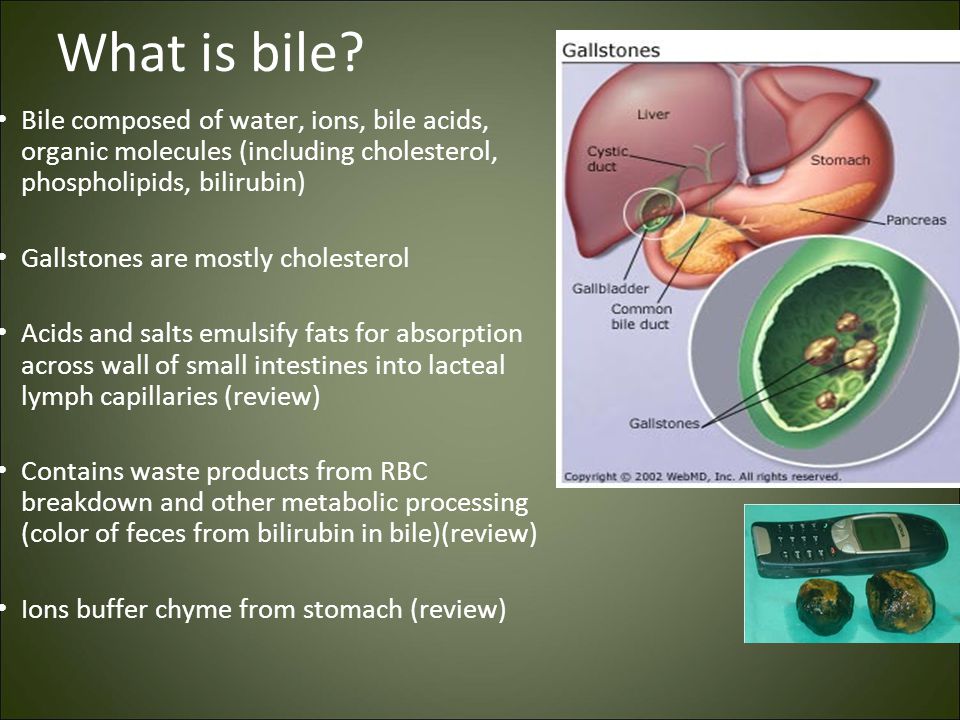 It can occur due to a sudden injury of a previously healthy liver or due to an additional insult to an already diseased liver. It is important to seek immediate veterinary care for treatment to support the liver until it can regenerate and compensate for the insult. Any underlying causes of the liver failure need to be identified and treated, if present. Make sure to tell your veterinarian about any medications your pet receives or any access your pet may have to poisons. Treatment may include intravenous fluids, diet changes, antibiotics, and certain liver medications. Another goal of therapy is to prevent or treat neurologic complications of liver failure.
It can occur due to a sudden injury of a previously healthy liver or due to an additional insult to an already diseased liver. It is important to seek immediate veterinary care for treatment to support the liver until it can regenerate and compensate for the insult. Any underlying causes of the liver failure need to be identified and treated, if present. Make sure to tell your veterinarian about any medications your pet receives or any access your pet may have to poisons. Treatment may include intravenous fluids, diet changes, antibiotics, and certain liver medications. Another goal of therapy is to prevent or treat neurologic complications of liver failure.
The liver has multiple functions, including removing many toxins from the bloodstream and producing blood clotting proteins. When it is not working properly, many other organs can be affected.
Hepatic encephalopathy, a syndrome of neurologic problems caused by poor liver function, is seen in a number of liver diseases. While the development of this condition is not completely understood, failure of the liver to clear poisons from the bloodstream, changes in amino acid metabolism caused by the liver disease, and neurologic changes may act together to cause this disorder. Signs of hepatic encephalopathy include dullness, inability to respond to basic commands, circling, head pressing, aimless wandering, weakness, poor coordination, blindness, excessive drooling, behavior changes (e.g., aggression), dementia, collapse, seizures, and coma.
While the development of this condition is not completely understood, failure of the liver to clear poisons from the bloodstream, changes in amino acid metabolism caused by the liver disease, and neurologic changes may act together to cause this disorder. Signs of hepatic encephalopathy include dullness, inability to respond to basic commands, circling, head pressing, aimless wandering, weakness, poor coordination, blindness, excessive drooling, behavior changes (e.g., aggression), dementia, collapse, seizures, and coma.
Treatment of hepatic encephalopathy is aimed at providing supportive care and rapidly reducing the poisons being produced by the digestive tract. Severely affected dogs can be comatose or semicomatose and should not be fed until their status improves. Treatment is likely to include intravenous fluids to correct dehydration and electrolyte (salt) imbalances. Enemas may be used to cleanse the intestines of ammonia and other poisons, and to introduce nutrients that help decrease poison production. Medications to affect the bacterial populations in the gut may also be used to reduce the absorption of toxic products, such as ammonia. Once the dog has been stabilized, treatment is aimed at preventing recurrence. A protein-modified restricted diet may be prescribed. The signs of hepatic encephalopathy can be worsened by intestinal bleeding, infections, certain drugs (such as corticosteroids and sedatives), cancer, low blood sugar, fever, kidney disease, dehydration, and constipation. Your veterinarian may prescribe additional treatments to address these concerns.
Medications to affect the bacterial populations in the gut may also be used to reduce the absorption of toxic products, such as ammonia. Once the dog has been stabilized, treatment is aimed at preventing recurrence. A protein-modified restricted diet may be prescribed. The signs of hepatic encephalopathy can be worsened by intestinal bleeding, infections, certain drugs (such as corticosteroids and sedatives), cancer, low blood sugar, fever, kidney disease, dehydration, and constipation. Your veterinarian may prescribe additional treatments to address these concerns.
Ascites is a condition in which fluid collects in the abdomen. In patients with liver disease, ascites is caused by a combination of high blood pressure in the liver, low levels of protein in the blood, and an imbalance in sodium and water metabolism. The first step in the control of ascites is restriction of sodium in the dog’s diet. However, sodium-restricted diets alone are often not sufficient, and diuretics (medications that promote loss of fluid by the kidneys) may also be needed. If ascites interferes with breathing, appetite, or comfort, fluid can be removed from the abdomen using a long needle in a process called abdominocentesis. Periodic abdominocentesis can also be used if ascites does not respond to treatment with medication.
If ascites interferes with breathing, appetite, or comfort, fluid can be removed from the abdomen using a long needle in a process called abdominocentesis. Periodic abdominocentesis can also be used if ascites does not respond to treatment with medication.
Clotting defects occur in dogs with liver disease because the liver produces many of the proteins responsible for the clotting process. In addition, there can be decreased absorption of vitamins that aid in clotting from the digestive tract. Clotting problems can be treated using transfusions of blood or plasma to provide the necessary clotting factors. Heparin and vitamin K can also be administered to decrease or increase clotting ability. Your veterinarian will prescribe the treatment most appropriate for your pet, its overall condition, and blood type.
Dogs with acute liver failure and long-standing liver disease are susceptible to bacterial infections. Your veterinarian will be alert to this possibility because signs of the liver disease itself (for example, fever or low blood sugar) can be similar to those of infection. One or more antibiotics may be necessary to adequately treat the types of bacteria associated with the infection.
One or more antibiotics may be necessary to adequately treat the types of bacteria associated with the infection.
Fibrosis, the formation of fibrous scar tissue in the liver, can eventually lead to liver cirrhosis. Cirrhosis is a serious disease that disrupts liver function. However, fibrosis can sometimes be reversed or reduced by the use of appropriate medications. Your veterinarian can determine which, if any, of the available medications would be beneficial for your pet.
Portosystemic shunts have already been described as a congenital (inborn) defect Liver Congenital abnormalities are conditions that an animal is born with; they are often called “birth defects.” Some of these conditions are inherited and tend to occur within particular families… read more . However, in some cases they can develop as a part of illness. In these instances they are called acquired shunts. They can be caused by high blood pressure in the vessels entering the liver. The diseased liver can be thought of as resisting blood flow into the organ. In this case, new blood vessels open to bypass the liver and connect to the blood system of the rest of the body, where the blood pressure is lower. It is as if the blood system were finding a detour around a traffic jam. Acquired shunts are usually seen in older animals and are more frequent in dogs than in cats.
In this case, new blood vessels open to bypass the liver and connect to the blood system of the rest of the body, where the blood pressure is lower. It is as if the blood system were finding a detour around a traffic jam. Acquired shunts are usually seen in older animals and are more frequent in dogs than in cats.
Signs of an acquired shunt include excessive thirst, vomiting, and diarrhea. Fluid accumulation in the abdomen (ascites) is common. Affected dogs may also have neurologic signs (due to hepatic encephalopathy) that come and go. Laboratory tests can identify abnormalities associated with the underlying liver disease. Medical treatment of the disease to minimize the neurologic signs and fluid build-up in the abdomen can result in a favorable outlook for some dogs with this condition.
Because of the liver’s function in metabolizing drugs, some drugs have been associated with liver dysfunction in dogs. The specific signs and effects depend on the drug and dosage. In many cases your veterinarian will be aware of the potential for liver disease when prescribing these drugs and will monitor your dog for any signs of decreased or altered function.
Other substances that are toxic to the liver include heavy metals, certain herbicides, fungicides, insecticides, rodent poisons, aflatoxins (produced by mold), amanita mushrooms, cycad plants (Sago palm ornamental plants for the yard and home), and blue-green algae. These can cause life-threatening liver damage.
If your dog has had an accidental overdose of a medication, has had an adverse reaction to a medication (even at the prescribed dose), or has eaten a poison Poisoning , a veterinarian should be consulted immediately. If necessary, the veterinarian can take steps to minimize absorption of the drug or poison. Depending on the situation, the veterinarian may induce vomiting, administer activated charcoal, pump the animal’s stomach, and/or administer an appropriate antitoxin.
Several types of infections may affect the liver, including viral, bacterial, fungal, and parasitic diseases.
Viral diseases of dogs associated with liver dysfunction include infectious canine hepatitis and canine herpesvirus. Infectious canine hepatitis Infectious Canine Hepatitis Infectious canine hepatitis is a worldwide, contagious disease of dogs with signs that vary from a slight fever and congestion of the mucous membranes to severe depression, severe reduction… read more , caused by canine adenovirus 1, can cause longterm inflammation and scarring of the liver in addition to causing death of liver tissue. Canine herpesvirus causes severe, often fatal liver disease in puppies.
Infectious canine hepatitis Infectious Canine Hepatitis Infectious canine hepatitis is a worldwide, contagious disease of dogs with signs that vary from a slight fever and congestion of the mucous membranes to severe depression, severe reduction… read more , caused by canine adenovirus 1, can cause longterm inflammation and scarring of the liver in addition to causing death of liver tissue. Canine herpesvirus causes severe, often fatal liver disease in puppies.
Accidentally injecting an intranasal Bordetella vaccine into the skin instead of squirting it into the nose can result in liver damage in some dogs.
Leptospirosis Leptospirosis in Dogs Leptospirosis is a disease caused by bacteria in the genus Leptospira; there are roughly 21 species, with more than 250 varieties (called serovars) that can cause disease. Because the… read more is a bacterial infection, caused by Leptospira interrogans, that can cause liver disease. The diagnosis is usually made with a blood test or identification of the organism in urine or blood samples. Treatment includes supportive care and treatment with appropriate antibiotics. Special precautions are recommended when handling dogs suspected of leptospirosis, because this organism may also infect humans.
The diagnosis is usually made with a blood test or identification of the organism in urine or blood samples. Treatment includes supportive care and treatment with appropriate antibiotics. Special precautions are recommended when handling dogs suspected of leptospirosis, because this organism may also infect humans.
Other types of bacterial infections, such as those caused by Clostridium piliforme orMycobacterium species, can cause liver damage. Infections in other parts of the body can invade into liver tissue and cause damage or dysfunction. Because the liver can help protect the body from bacterial infections, dogs with liver failure or with longterm liver disease are more susceptible to many types of bacterial infections.
The most common fungal infections associated with liver dysfunction are coccidioidomycosis Coccidioidomycosis (Valley Fever) Funguses (also called fungi) are parasitic, spore-producing organisms. They obtain their nourishment by absorbing food from the hosts on which they grow.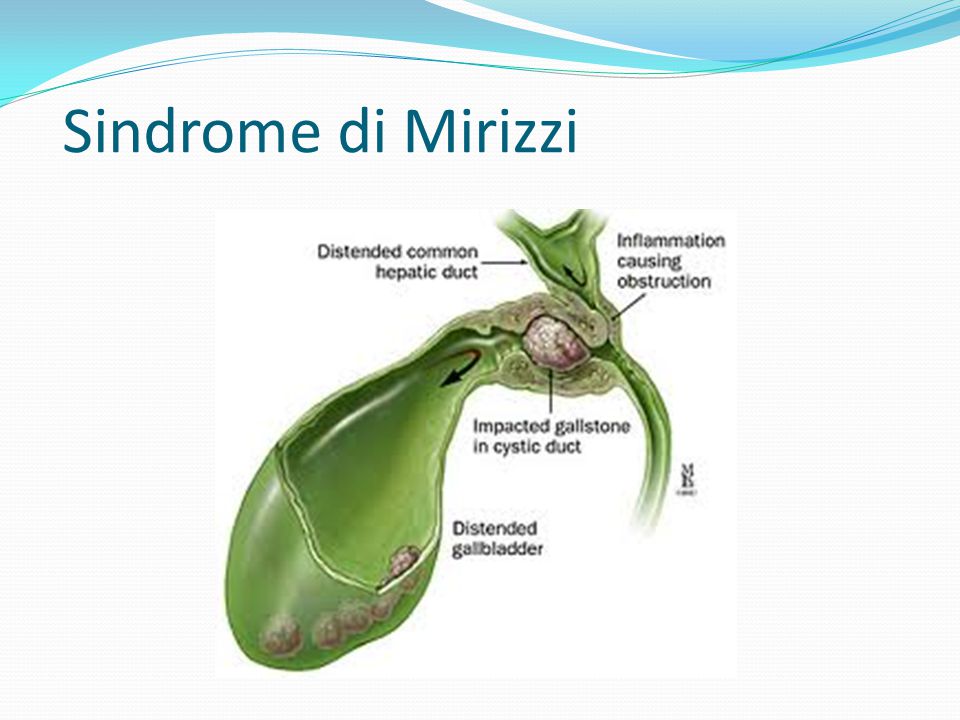 Many species of fungus exist in the… read more and histoplasmosis Histoplasmosis Funguses (also called fungi) are parasitic, spore-producing organisms. They obtain their nourishment by absorbing food from the hosts on which they grow. Many species of fungus exist in the… read more . Signs of liver dysfunction include fluid accumulation in the abdomen (ascites), jaundice, and an enlarged liver. Histoplasmosis is generally treated with one or more prescription antifungal drugs. Depending on the level of illness, the outlook for recovery may be poor. Coccidioidomycosis can be treated with the longterm (6 to 12 months) use of antifungal medications. However, relapses do sometimes occur, and life-long treatment may be necessary for some dogs.
Many species of fungus exist in the… read more and histoplasmosis Histoplasmosis Funguses (also called fungi) are parasitic, spore-producing organisms. They obtain their nourishment by absorbing food from the hosts on which they grow. Many species of fungus exist in the… read more . Signs of liver dysfunction include fluid accumulation in the abdomen (ascites), jaundice, and an enlarged liver. Histoplasmosis is generally treated with one or more prescription antifungal drugs. Depending on the level of illness, the outlook for recovery may be poor. Coccidioidomycosis can be treated with the longterm (6 to 12 months) use of antifungal medications. However, relapses do sometimes occur, and life-long treatment may be necessary for some dogs.
Toxoplasmosis Toxoplasmosis in Dogs Toxoplasmosis is caused by Toxoplasma gondii, a protozoan parasite that infects humans and other warmblooded animals. It is found worldwide. Felines (members of the cat family) are the. .. read more is a parasitic disease that can kill liver cells and cause sudden liver failure. Jaundice, fever, lethargy, vomiting, increased abdominal fluid, and diarrhea are seen in addition to signs of central nervous system, lung, or eye involvement. Liver disease associated with toxoplasmosis in dogs is most often seen in young dogs or those with a suppressed immune system. Some dogs with toxoplasmosis are also infected with canine distemper virus, in which case the disease is sudden in onset and rapidly fatal. Diagnosis can be difficult. Treatment usually involves appropriate antibiotics. The outlook for recovery depends on the severity of the illness.
.. read more is a parasitic disease that can kill liver cells and cause sudden liver failure. Jaundice, fever, lethargy, vomiting, increased abdominal fluid, and diarrhea are seen in addition to signs of central nervous system, lung, or eye involvement. Liver disease associated with toxoplasmosis in dogs is most often seen in young dogs or those with a suppressed immune system. Some dogs with toxoplasmosis are also infected with canine distemper virus, in which case the disease is sudden in onset and rapidly fatal. Diagnosis can be difficult. Treatment usually involves appropriate antibiotics. The outlook for recovery depends on the severity of the illness.
Leishmaniosis is a potentially fatal disease caused by Leishmania species of protozoa. The disease affects multiple organs, including the liver. There are several drugs available for treatment, but they rarely cure the disease. Lifelong therapy may be necessary. The disease can pass to people, especially those with compromised immune systems. The outlook for severely affected dogs is poor.
The outlook for severely affected dogs is poor.
Chronic hepatitis is a longterm inflammation of the liver. It is more common in dogs than in cats. Several breeds of dogs are predisposed to this condition, including Bedlington Terriers, Labrador Retrievers, Cocker Spaniels, Doberman Pinschers, Skye Terriers, Standard Poodles, Springer Spaniels, Chihuahuas, Maltese, and West Highland White Terriers. Although the cause can be determined in some cases of chronic hepatitis, in many cases the cause remains unknown. Copper and iron accumulation is often seen in dogs with chronic hepatitis. Other conditions that have been associated with chronic hepatitis include viral infection (such as infectious canine hepatitis), leptospirosis, exposure to certain chemicals or poisons, and drug toxicity.
Abnormal accumulations of copper can lead to copper-associated hepatopathy, one the most common causes of chronic hepatitis. Adding zinc to the diet may help to protect the liver by preventing the absorption of copper from the gut in these cases. Please see Liver Liver for more information on copper-associated liver disease.
Please see Liver Liver for more information on copper-associated liver disease.
Depending on the signs, the cause (if known), and the breed and history of the dog, your veterinarian will determine the appropriate plan for treating and managing chronic hepatitis.
Liver inflammation can also occur due to infections around the biliary tract, which transports bile from inside the liver to the small intestine. These infections ascend from the intestinal tract, often due to slow movement of bile, gallstones, or other biliary tract disorders. The condition, called cholangiohepatitis, is rare in dogs. Antibiotics are needed to treat the infection, and surgery can be necessary, depending on the cause.
Several diseases involving the endocrine glands can cause liver problems in dogs. These diseases include diabetes mellitus Diabetes Mellitus The pancreas is composed of several types of cells that have distinct functions involved in the production of hormones and digestive enzymes.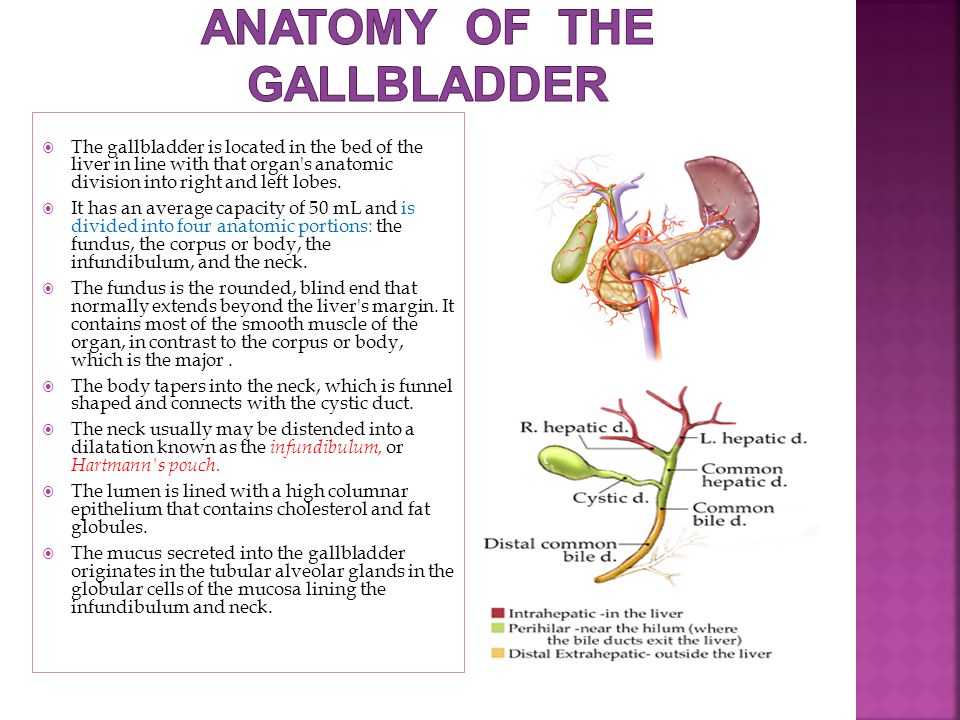 The exocrine pancreas produces enzymes that are… read more , Cushing disease Cushing Disease The pituitary gland is located near the center and bottom of the brain. It produces a number of critical hormones that control many parts of the body, including several other endocrine glands… read more , and hyperthyroidism Hyperthyroidism The thyroid gland is a 2-lobed gland in the neck. It produces iodine-containing hormones, the most important of which are T3 and T4 , which affect many processes in the body. In general, the… read more .
The exocrine pancreas produces enzymes that are… read more , Cushing disease Cushing Disease The pituitary gland is located near the center and bottom of the brain. It produces a number of critical hormones that control many parts of the body, including several other endocrine glands… read more , and hyperthyroidism Hyperthyroidism The thyroid gland is a 2-lobed gland in the neck. It produces iodine-containing hormones, the most important of which are T3 and T4 , which affect many processes in the body. In general, the… read more .
Dogs with diabetes mellitus can rarely have liver dysfunction associated with their disease. Diabetic dogs have an increased risk for inflammation of the pancreas (pancreatitis), which can lead to some types of liver disease. Some diabetic dogs will develop hepatocutaneous syndrome, which is often deadly. They can also have an increased risk of developing fatty degeneration of the liver because diabetes mellitus increases the metabolism and mobilization of lipids. Lipids include any of a group of water-soluble fats and fat-like chemical substances that are sources of fuel for the body. However, when too many lipids are deposited in the liver, the function of the organ is impaired. Insulin replacement may or may not correct this storage problem.
Lipids include any of a group of water-soluble fats and fat-like chemical substances that are sources of fuel for the body. However, when too many lipids are deposited in the liver, the function of the organ is impaired. Insulin replacement may or may not correct this storage problem.
Dogs with hyperadrenocorticism are likely to develop changes in the liver similar to those seen in overdoses of cortico-steroids. These problems are controlled when the underlying disorder is treated. Liver changes can also be seen in dogs with hypothyroidism.
Liver cysts can be acquired (usually single cysts) or present at birth (usually multiple cysts). Congenital polycystic disease of the liver has been reported in Cairn Terriers, Bull Terriers, Beagles, and West Highland White Terriers. Occasionally, the cysts can become large and cause abdominal swelling and other signs such as lethargy, vomiting, and excessive thirst. Your veterinarian may be able to feel masses in the abdomen that usually are not painful. Fluid may accumulate in the abdomen. The problem can be identified using x-rays or ultrasonography, although a definitive diagnosis is made by biopsy. Surgical removal of the cysts usually cures the condition.
Fluid may accumulate in the abdomen. The problem can be identified using x-rays or ultrasonography, although a definitive diagnosis is made by biopsy. Surgical removal of the cysts usually cures the condition.
The liver produces and stores energy in the form of glycogen. Glycogen is released to help maintain blood sugar levels throughout the day. However, in dogs with vacuolar hepatopathy, abnormal amounts of glycogen accumulate within liver cells, distending them. It is a common liver syndrome that is typically revealed with the results of a liver tissue biopsy. The syndrome is often associated with excessive adrenal gland function (hyperadrenocorticism) or with longterm stress, illnesses, inflammation, or cancer. Certain drugs can also stimulate this syndrome. The presence of glycogen-distended liver cells may also be present in dogs with nodular hyperplasia and certain types of liver cancer. Veterinarians will determine and treat the underlying cause of these liver changes.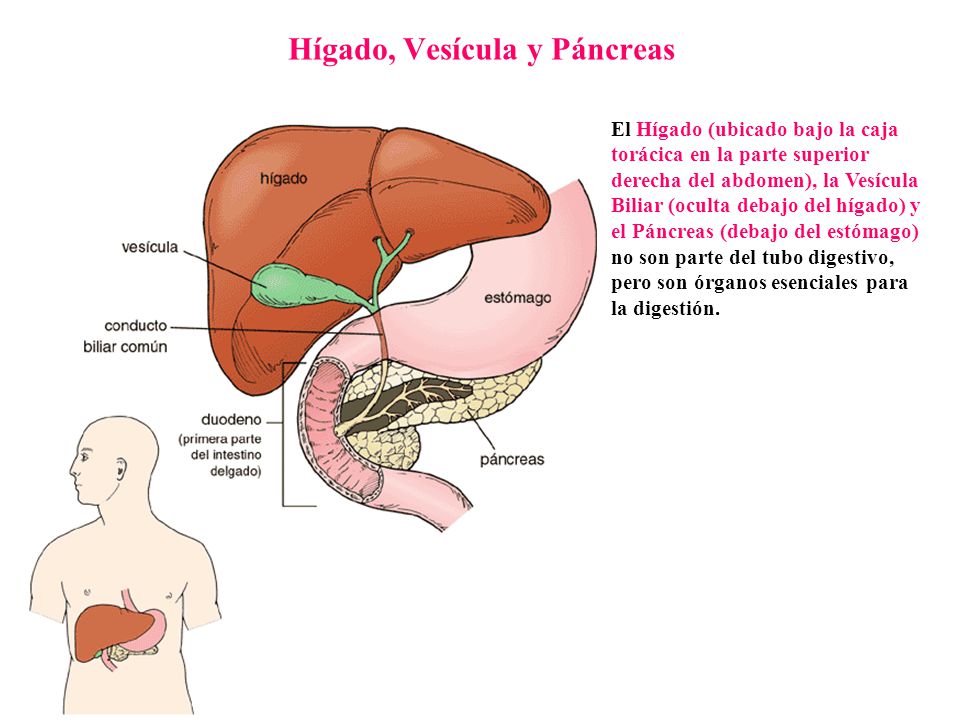 They may also recommend a change in dog food, the addition of a vitamin supplement, or other treatments. A form of this syndrome is common in Scottish Terriers. Affected dogs of this breed can slowly or rapidly develop severe liver conditions, such as cirrhosis, liver cancer, or liver failure.
They may also recommend a change in dog food, the addition of a vitamin supplement, or other treatments. A form of this syndrome is common in Scottish Terriers. Affected dogs of this breed can slowly or rapidly develop severe liver conditions, such as cirrhosis, liver cancer, or liver failure.
Nodular hyperplasia is a nonspreading, age-related condition in dogs. It does not usually cause disease or affect liver function. If it is detected, a biopsy may be needed to distinguish these changes from those caused by other serious liver diseases.
Hepatocutaneous syndrome is a rare, longterm, progressive disorder that affects both the liver and the skin. Affected dogs often have crusting sores on their lips, nose, footpad, ears, elbows, and around the eyes. Signs also include loss of appetite, weight loss, lethargy, and an increase in thirst and urination. The condition can occur in dogs with certain longterm diseases, such as diabetes mellitus and certain tumors, and the longterm use of certain drugs, such as phenobarbital. Your veterinarian may recommend a diet change and treatments for the skin sores. Other medications may also help some affected dogs, and underlying diseases need to be managed. Unfortunately, dogs often die from this condition.
Your veterinarian may recommend a diet change and treatments for the skin sores. Other medications may also help some affected dogs, and underlying diseases need to be managed. Unfortunately, dogs often die from this condition.
Tumors that originate in the liver (called primary tumors) are less common than those caused by spread from another part in the body. Primary tumors are most often seen in animals more than 9 years old. These tumors can be either malignant or benign and may spread (metastasize) to other locations such as the lymph nodes, abdominal wall, and lungs.
Cancers that can spread to the liver include lymphoma, pancreatic cancer, mammary (breast) cancer, and many others. Metastatic tumors usually occur at multiple sites.
Signs can include a decreased appetite, lethargy, fever, excessive urination and thirst, vomiting, weight loss, jaundice, bleeding problems, hepatic encephalopathy (see above), enlarged liver, and fluid accumulation in the abdomen. Seizures may develop because of hepatic encephalopathy, low blood sugar, or the spread of cancer to the brain.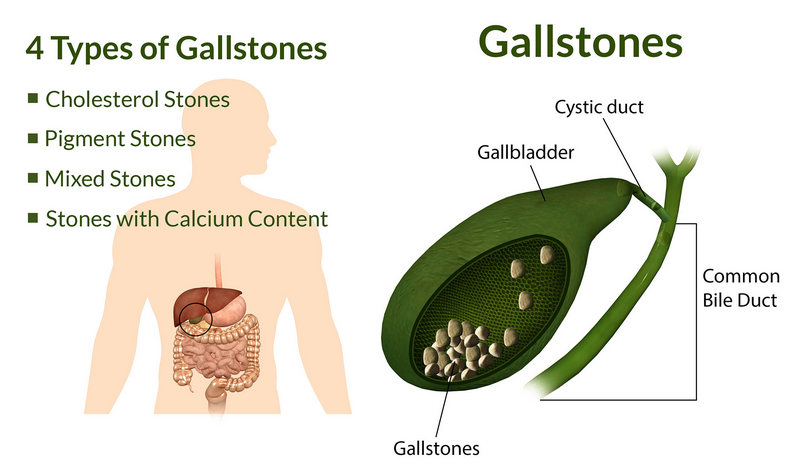 An abdominal tumor may be found by your veterinarian during an examination or during an abdominal ultrasound. A biopsy is often needed for a definitive diagnosis. Sometimes a liver tumor can rupture and result in life-threatening internal bleeding. If a single liver lobe is involved, surgical removal of the involved lobe is often recommended. Chemotherapy may be effective for some other cancer types. The outlook is poor for primary liver tumors that involve multiple lobes because an effective treatment is not yet available.
An abdominal tumor may be found by your veterinarian during an examination or during an abdominal ultrasound. A biopsy is often needed for a definitive diagnosis. Sometimes a liver tumor can rupture and result in life-threatening internal bleeding. If a single liver lobe is involved, surgical removal of the involved lobe is often recommended. Chemotherapy may be effective for some other cancer types. The outlook is poor for primary liver tumors that involve multiple lobes because an effective treatment is not yet available.
Several other noninfectious chronic diseases may also affect the liver.
Glycogen is a form of stored sugar found in animals. It is converted to glucose when the body needs energy. Glycogen storage diseases are caused by a deficiency of certain enzymes and result in failure of glycogen to be released from cells. When this occurs, glycogen accumulates within the liver and other organs and is unavailable for conversion to glucose. The disease is inherited in certain breeds, including Malteses, German Shepherds, and Curly Coated Retrievers. Signs of this disorder include an enlarged liver, retarded growth, and weakness due to low blood sugar levels. Liver biopsies or genetic tests are used for diagnosis. Treatment is based on signs of illness and includes frequent small meals of high-carbohydrate food. The outlook in most cases is poor, and most dogs with these diseases die at a young age.
Signs of this disorder include an enlarged liver, retarded growth, and weakness due to low blood sugar levels. Liver biopsies or genetic tests are used for diagnosis. Treatment is based on signs of illness and includes frequent small meals of high-carbohydrate food. The outlook in most cases is poor, and most dogs with these diseases die at a young age.
Amyloid is a protein that is not folded into the correct shape. Misfolded proteins clump together and cause damage by displacing normal cells. Amyloidosis is an inherited disease of Chinese Shar-Peis; however, the liver is not always affected. Longterm exposure to antigens, which can be associated with longterm infections, can also cause amyloidosis in the liver. Although some dogs may show no signs, typical signs include loss of appetite, excessive thirst and urination, fever, vomiting, jaundice, and an enlarged liver. Affected animals may collapse and have pale mucous membranes due to rupture of the liver and subsequent internal bleeding. Diagnosis is made by identifying amyloid deposits in liver biopsy samples. Drugs are available that may slow the progression of amyloidosis, but the outlook is poor, especially if the diagnosis is made late in the disease.
Diagnosis is made by identifying amyloid deposits in liver biopsy samples. Drugs are available that may slow the progression of amyloidosis, but the outlook is poor, especially if the diagnosis is made late in the disease.
The liver secretes bile, a substance that assists with digestion and absorption of fats and with elimination of certain waste products from the body. Bile is stored in the gallbladder and is released into the small intestine through the bile duct.
Jaundice (a yellow tinge noticeable in the skin, mucous membranes, and eyes) is often the main sign of diseases of the gallbladder and bile duct. An exception is cancer of the gallbladder, which may not cause jaundice.
Gallbladder agenesis is the lack of a gallbladder from birth. Unless the bile ducts within the liver are also missing, the lack of a gallbladder doesn’t cause any problems.
Biliary atresia is the lack of development of bile ducts within the liver and is uncommon. Affected dogs are jaundiced and unthrifty at a young age.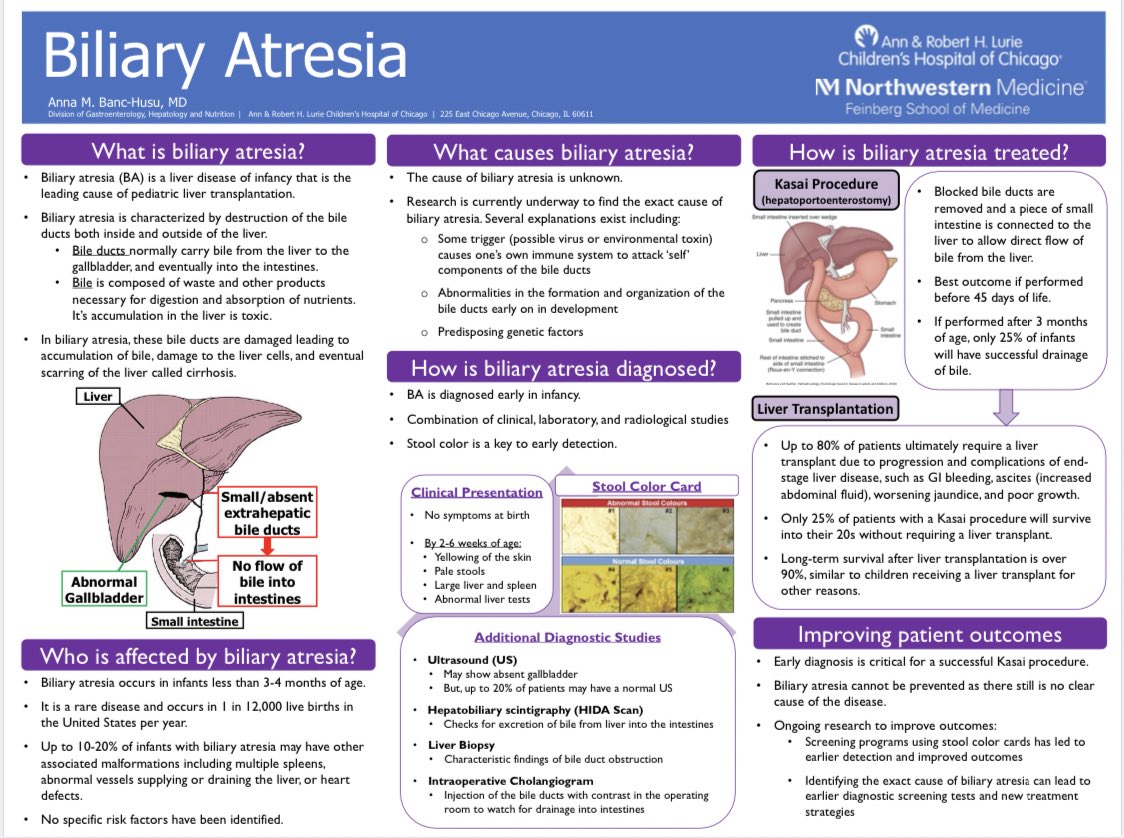 The outlook is poor.
The outlook is poor.
Cystic mucosal hyperplasia of the gallbladder is also known as cystic mucinous hypertrophy, cystic mucinous hyperplasia, and mucinous cholecystitis. It is the development and growth of cysts filled with mucusin the gallbladder. It may be caused by treatment with steroid hormones, such as female reproductive hormones. An early stage of the disorder may be a condition known as gallblader dysmotility.
Obstruction of the bile duct is associated with a number of conditions, including inflammation of the pancreas,gall bladder, or small intestines; foreign material in the intestine; cancer; and parasitic infections. Tissue swelling, inflammation, or fibrosis can cause compression of the bile duct. Diagnosis is based on laboratory tests, x-rays, and ultrasonography. Abdominal surgery is frequently necessary to diagnose and treat the obstruction. However, in dogs with pancreatitis, treatment will often relieve the obstruction. If this is not successful, surgery may be necessary. If gallstones are the cause of obstruction, the gallbladder may need to be removed. When cancer is present, surgery can provide some relief but is not a cure.
If gallstones are the cause of obstruction, the gallbladder may need to be removed. When cancer is present, surgery can provide some relief but is not a cure.
Inflammation of the gallbladder (cholecystitis) can be caused by bacterial infections, cancer, trauma to the liver, gallbladder obstruction, or blood clots. In some cases, the wall of the gallbladder is damaged, and bile leaks into the abdomen causing severe abdominal infection and inflammation, which can be fatal. Loss of appetite, abdominal pain, jaundice, fever, and vomiting are common signs. The dog may be in a state of shock due to abdominal inflammation.
The inflammation can also spread to the surrounding branches of the bile duct and the liver. Diagnosis is based on blood tests and ultrasound findings and can be confirmed by biopsy for bacterial cultures and tissue analysis. Treatment usually consists of removal of the gallbladder and appropriate antibiotic medication to treat infection. The outlook is good if surgery and appropriate antibiotics are started early but is less favorable if diagnosis and treatment are delayed.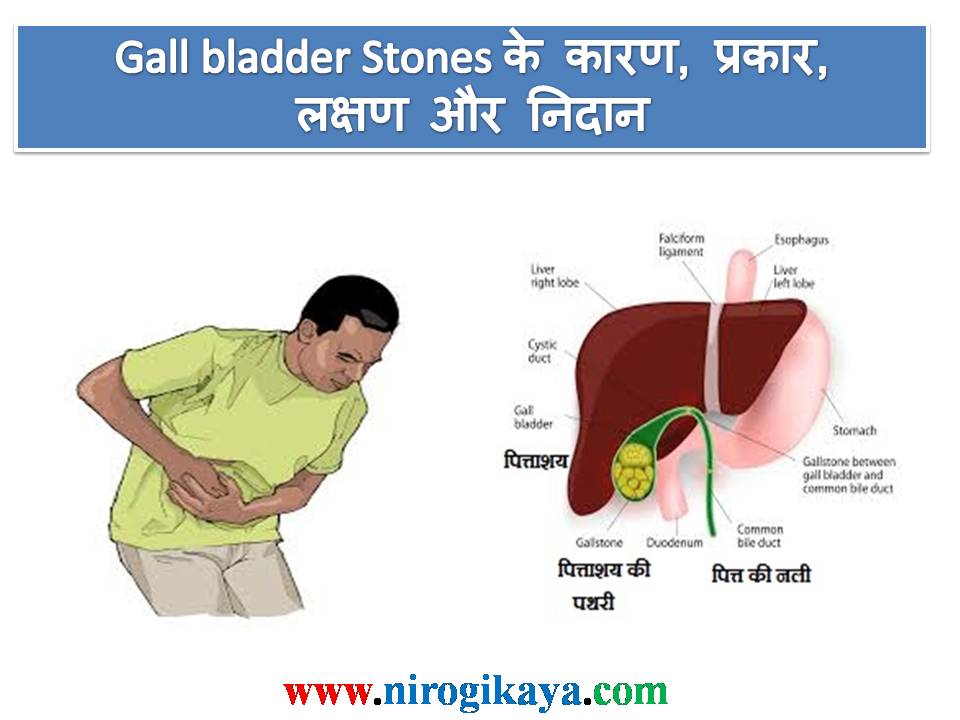
A gallbladder mucocele is an abnormal accumulation of bile within the bile ducts that results in a bile duct obstruction. As it expands, the mucocele can lead to inflammation, tissue death, or rupture of the gallbladder. The condition may be inherited in some breeds, including Shetland Sheepdogs. Underlying diseases can also predispose dogs to the condition. Some mildly affected dogs can improve with medications alone; however, most will require surgery to remove the gallbladder. Liver biopsies are often taken during surgery. Antibiotics are usually necessary for 4–6 weeks after surgery. Dogs with a ruptured gallbladder and blood poisoning may not survive, even with surgery.
Gallstones rarely cause disease. When it does occur, disease is usually seen in middle-aged to older dogs, and may be more common in small-breed dogs. Signs include vomiting, jaundice, loss of appetite, abdominal pain, fever, and discomfort after eating, but many dogs show no signs. Gallstones are diagnosed by ultrasonography. Because abdominal ultrasounds are being used more frequently, gallstones are being diagnosed more often in recent years. Medications, including antibiotics, can treat dogs with uncomplicated disease. Surgery to remove the stones is necessary if they are obstructing bile or causing cholecystitis. Removal of the gallbladder may also be necessary.
Because abdominal ultrasounds are being used more frequently, gallstones are being diagnosed more often in recent years. Medications, including antibiotics, can treat dogs with uncomplicated disease. Surgery to remove the stones is necessary if they are obstructing bile or causing cholecystitis. Removal of the gallbladder may also be necessary.
Rupture of the gallbladder or bile duct is most often due to gallstone obstruction, inflammation of the gallbladder, or blunt trauma. Rupture of the bile duct may also occur as a result of cancer or certain parasites. Rupture leads to leakage of bile into the abdomen, causing a serious condition called bile peritonitis, which may be fatal if the rupture is not repaired. Treatment includes surgery, which consists of placing a stent in the bile duct, removing the gallbladder, or connecting the gallbladder with the small intestine.
Also see professional content regarding liver and gallbladder disorders Hepatic Disease in Small Animals .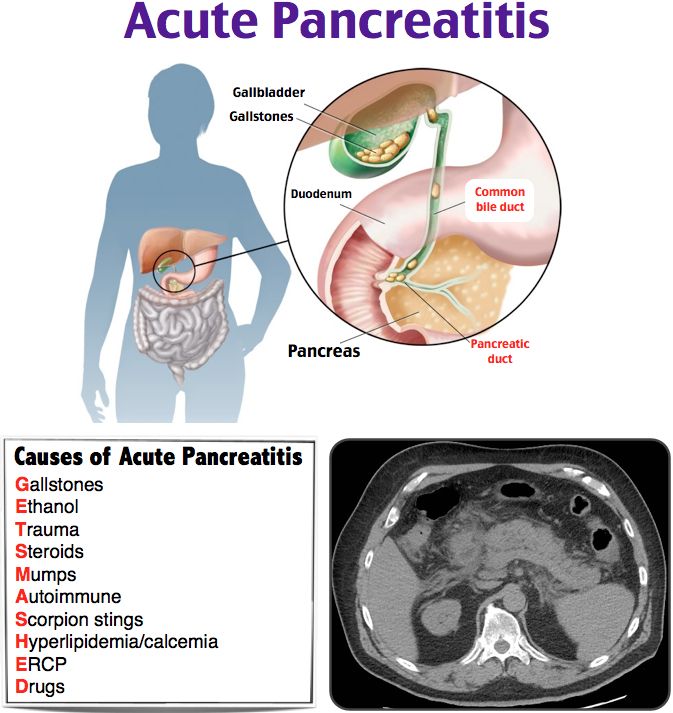
Acute cholecystitis: causes, symptoms, clinical guidelines, diet
Acute cholecystitis is a complication of cholelithiasis accompanied by abdominal pain, fever, vomiting and nausea. The most effective way to eliminate pathology forever is laparoscopic cholecystectomy. Unfortunately, conservative methods of treating the disease relieve symptoms only in the initial stages and do not contribute to a complete recovery.
Acute cholecystitis
- Causes of acute cholecystitis
- Symptoms of acute cholecystitis
- How does inflammation of the gallbladder develop?
- Why is acute cholecystitis dangerous?
- How to treat acute cholecystitis
- Diet for inflammation of the gallbladder
- Sample menu for inflammation of the gallbladder
- Prevention of acute cholecystitis
Causes of acute cholecystitis
Acute cholecystitis occurs due to prolonged stagnation of bile in the gallbladder. Its components (mainly cholesterol) crystallize over time and precipitate. This contributes to the appearance of stones and a violation of the biliary function. If the stone stops in the bile duct, an acute inflammatory process develops. The damaged mucosa releases more fluid into the bladder lumen than it can absorb. Prolonged stretching of the wall leads to the release of inflammatory mediators and subsequent mucosal ischemia.
Its components (mainly cholesterol) crystallize over time and precipitate. This contributes to the appearance of stones and a violation of the biliary function. If the stone stops in the bile duct, an acute inflammatory process develops. The damaged mucosa releases more fluid into the bladder lumen than it can absorb. Prolonged stretching of the wall leads to the release of inflammatory mediators and subsequent mucosal ischemia.
Important!
This condition is very dangerous, because a frequent occurrence is the addition of a bacterial infection. And acute inflammation, which first resolved, but then reappeared, provokes fibrotic changes in the bladder.
Acute inflammation of the gallbladder walls does not always occur against the background of cholelithiasis. Causes of the phenomenon:
- The patient has recently undergone a major operation, trauma, burns, sepsis.
- Prolonged fasting leading to stagnation of bile.

- Shock.
- Vasculitis, including systemic lupus erythematosus.
We list the main factors that contribute to the development of exacerbation of cholecystitis:
- intestinal dysbacteriosis;
- infection with protozoa and helminths;
- streptococcus, Pseudomonas aeruginosa and other infectious agents;
- hepatitis virus;
- allergens;
- hormonal failures.
Risk factors include: age over 40 years, features of the anatomical structure of the bile ducts and bladder, pregnancy, prolapse of the abdominal organs.
Important!
Significantly increase the risk of disease sedentary lifestyle, frequent constipation, unhealthy diet. Fasting and rapid weight loss are no less dangerous.
To make an appointment, leave your phone number
Symptoms of acute cholecystitis
Signs of acute inflammation of the gallbladder always appear suddenly. As a rule, patients complain of sharp pains in the right hypochondrium, which spread to the entire upper half of the abdomen. Unpleasant sensations can be observed in the region of the heart, rise to the collarbones and neck. They last for several days. Vomiting and nausea are often observed.
As a rule, patients complain of sharp pains in the right hypochondrium, which spread to the entire upper half of the abdomen. Unpleasant sensations can be observed in the region of the heart, rise to the collarbones and neck. They last for several days. Vomiting and nausea are often observed.
We list the most striking symptoms that inflammation of the gallbladder has:
- fever, accompanied by a slight yellowness of the skin;
- bitter taste and dry mouth, tongue covered with a lot of white coating;
- severe bloating, excessive gas;
- pruritus;
- fever with possible chills;
- loss of appetite, lethargy, constant fatigue, increased fatigue.
From the side of the cardiovascular system, reflex angina, lowering blood pressure, arrhythmia can be observed. Separately, let’s talk about the pain syndrome. It is accompanied by heartburn, belching of air and food, severe nausea.
How inflammation of the gallbladder develops
As we said earlier, inflammation occurs due to blockage of the bile ducts by a stone or a number of other reasons. The attack occurs suddenly, mainly after eating. The pain syndrome resembles biliary colic, but the spasms last longer and are characterized by greater intensity.
The attack occurs suddenly, mainly after eating. The pain syndrome resembles biliary colic, but the spasms last longer and are characterized by greater intensity.
If gallbladder inflammation is not treated promptly, some patients may develop limited perforation. The pain in the abdomen gradually increases, the temperature rises. Muscles become rigid, which gives reason to suspect suppuration, gangrene, or perforation in the affected organ.
Have you or someone close to you experienced acute inflammation of the gallbladder? Remember what you should never do:
- Apply a heating pad to the affected area.
- Use prescription painkillers and alcoholic beverages.
- Do an enema.
- Use any medication other than antispasmodics.
The best thing to do is to immediately call a doctor, having previously provided the patient with a state of rest.
To make an appointment, leave your phone number
Why is acute cholecystitis dangerous?
Acute cholecystitis can cause numerous complications that are dangerous to human life and health. Its most severe consequence is the occurrence of small ulcerations and necrotic foci in the walls of the organ, provoking perforation. If the patient is not provided with qualified medical care, he may die.
Its most severe consequence is the occurrence of small ulcerations and necrotic foci in the walls of the organ, provoking perforation. If the patient is not provided with qualified medical care, he may die.
Other dangerous diseases and conditions that pathology can provoke:
- Rupture of the gallbladder wall with the release of contents into the abdominal cavity.
- Ingestion of a stone from the gallbladder, causing obstruction.
- Transition of cholecystitis to a chronic form.
- Hepatic colic and mucocele of the affected organ.
- Peritonitis.
- Adhesion process.
- Inflammatory process in the bile ducts.
- Formation of a fistula of the gastrointestinal tract.
- Bubble stop working normally.
How to treat acute cholecystitis
In acute cholecystitis, conservative therapy, surgical treatment, and diet are used. Drug therapy involves the use of antispasmodics, antibacterial agents, saline infusion solutions.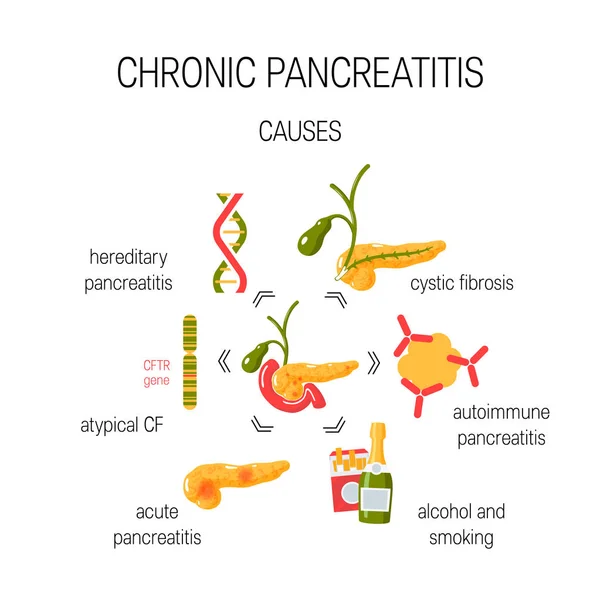 A competent approach to the relief of pain is very important, since some drugs can adversely affect the rheology of bile and provoke obstructive jaundice.
A competent approach to the relief of pain is very important, since some drugs can adversely affect the rheology of bile and provoke obstructive jaundice.
Treatment of inflammation of the gallbladder with laparoscopic surgery to remove the gallbladder has shown good results. The main indications for surgical treatment, if this pathology is diagnosed:
- Purulent, gangrenous, acute calculous cholecystitis.
- The presence of stones in the bladder.
- Development of anomalies in the affected organ.
- Neoplasms in the area of the gallbladder.
- Conservative therapy does not bring the desired result.
After a series of tests, an operation is prescribed to remove the gallbladder (cholecystectomy). This is a low-traumatic surgical intervention that does not leave behind cosmetic defects and allows you to quickly return to normal life. The intervention takes no more than 1.5 – 2 hours, and rehabilitation – 2 – 3 months.
Diet for inflammation of the gallbladder
Diet for acute cholecystitis is a prerequisite for recovery. Therefore, you will have to be careful about your diet and follow the recommendations of a specialist. You need to eat 4 – 5 times a day, in small portions, preferably at the same time. In no case do not allow states of overeating and severe hunger.
Therefore, you will have to be careful about your diet and follow the recommendations of a specialist. You need to eat 4 – 5 times a day, in small portions, preferably at the same time. In no case do not allow states of overeating and severe hunger.
A few more principles of catering:
- Exclusion of fatty, smoked, salty, spicy dishes, marinades, seasonings, pickles.
- Avoid alcohol and carbonated drinks.
- Eating a large amount of vegetables and fruits, whole grains, berry juices.
The food you eat should be prepared by boiling, stewing or baking. We recommend to abandon semi-finished products, canned food, industrial sweets, fatty creams.
Sample menu for inflammation of the gallbladder
In the diet of a person who has had acute cholecystitis, there must be: lean fish, dietary meats, dairy products with a low fat content, protein omelettes. From sweets it is allowed to eat:
- unsweetened jam;
- bread, confectionery croutons, biscuits;
- Marmalade, dried fruit, confectionery not containing cocoa;
- non-acid fruits.

It is strictly forbidden to eat: eggs with yolks, chocolate products, sour or spicy foods, cocoa, sweet carbonated drinks.
To make an appointment, leave your phone number
Prevention of acute cholecystitis
Preventive measures should be aimed at preventing biliary stasis and suppressing focal infection. Therefore, we recommend that you lead an active lifestyle, exercise, eat right and regularly, avoid strict diets, stop smoking and drinking alcohol.
It is also necessary:
- Visit a gastroenterologist every six months.
- Periodically perform abdominal ultrasonography (as directed by a specialist).
To make an appointment with a specialist, use the special form on the website or call the specified contact phone numbers. We will definitely help you return to a healthy life without pain and discomfort!
Symptoms of diseases of the gallbladder and biliary tract: how to recognize them?
Content
- 1 Symptoms of gallbladder and biliary tract diseases: how to recognize and prevent them
- 1.
 1 Diseases of the gallbladder and biliary tract: symptoms and treatment
1 Diseases of the gallbladder and biliary tract: symptoms and treatment- 1.1.1 Symptoms
9000 7 1.1.2 Treatment
- 1.
- 1.2 Cholecystitis: symptoms and treatment
- 1.3 Cholelithiasis: symptoms and treatment
- 1.4 Hepatitis: symptoms and treatment
- 1.4.1 Symptoms of hepatitis
- 1.4.2 Treatment of hepatitis
- 1.5 Cirrhosis of the liver: symptoms and treatment
- 1.5.1 Symptoms of cirrhosis of the liver:
- 1.5.2 Treatment of cirrhosis of the liver:
- 1.6 Sclerosing cholangi IT: symptoms and treatment
- 1.6.1 Symptoms of sclerosing cholangitis
- 1.6.2 Treatment of sclerosing cholangitis
- 1.7 Gallstone disease in children: symptoms and treatment
- 1.7.1 Symptoms of gallstone disease in children
- 1.7.2 Treatment of gallstone disease in children
- 1.8 Pancreatitis: symptoms and treatment
- 1.
 8.1 Symptoms of pancreatitis
8.1 Symptoms of pancreatitis - 1.8.2 Treatment of pancreatitis
- 1.
- 1.9 Fatty liver: symptoms and treatment 9003 6
- 1.9.1 Symptoms of fatty liver
- 1.9.2 Treatment of obesity
- 1.9.3 Prevention of fatty liver
- 1.14.0.1 What symptoms are signs of gallbladder and biliary tract disease?
- 1.14.0.2 Can diseases of the gallbladder and biliary tract manifest as pain in other areas of the body?
- 1.14.0.3 How often should preventive examinations be carried out to detect diseases of the gallbladder and biliary tract?
- 1.14.0.4 What are the treatments for diseases of the gallbladder and biliary tract?
- 1.14.0.
 5 What foods and drinks should be avoided in case of diseases of the gallbladder and biliary tract?
5 What foods and drinks should be avoided in case of diseases of the gallbladder and biliary tract? - 1.14.0.6 Is it possible to completely cure diseases of the gallbladder and biliary tract?
Find out about the symptoms of diseases of the gallbladder and biliary tract – yellowness of the skin and eyes, nausea, pain in the right hypochondrium, increased gas formation. Find out what diseases can lead to these symptoms and how to treat them.
The gallbladder and bile ducts are key elements of the human digestive system. They play an important role in the process of digestion of fat and utilization of its excess. However, an irrational lifestyle, malnutrition and other factors can lead to the development of various diseases and disorders in this system.
Diseases of the gallbladder and biliary tract symptoms manifest in the form of pain, discomfort and other negative sensations. They can lead to a recumbent lifestyle, decreased performance and other complications.
In this article, we will review the most common diseases of the biliary system, as well as discuss in detail the clinical manifestations of each of them. You will learn how to reduce the risk of biliary tract diseases and what you need to do to maintain your health for many years.
Diseases of the gallbladder and biliary tract: symptoms and treatment
Symptoms
Diseases of the gallbladder and biliary tract can present with different symptoms. One of the most common symptoms is a feeling of heaviness and pain in the right hypochondrium. Also seen:
- nausea;
- vomiting;
- jaundice;
- bloating;
- changes in feces;
- itching;
- alopecia;
- weakness.
If you notice any of these symptoms, see your doctor to diagnose and identify the cause.
Treatment
Treatment of diseases of the gallbladder and biliary tract depends on the specific diagnosis and its degree. In some cases, surgery may be required, such as removal of the gallbladder.
In some cases, surgery may be required, such as removal of the gallbladder.
In any case, you should consult a specialist and do not self-medicate, as this can lead to negative consequences.
Cholecystitis: symptoms and treatment
Cholecystitis is an inflammatory disease of the gallbladder that can occur due to bile stasis or infection. Symptoms of cholecystitis include sharp pain in the right upper quadrant of the abdomen, nausea, vomiting, fever, and yellowness of the skin and eyes.
Anti-inflammatory drugs and antibiotics are prescribed to treat cholecystitis. In some cases, surgery may be required to remove the gallbladder.
- The main symptoms of cholecystitis:
- Acute pain in the right upper quadrant of the abdomen – often the first sign of cholecystitis. The pain may increase after eating fatty and fried foods, as well as during hard physical exertion.
- Nausea and vomiting – may occur as a result of bile stasis in the gallbladder.

- Increased body temperature – usually indicates the presence of an infection in the body.
- Jaundice of the skin and eyes – this is a sign of a violation of the liver and may indicate stagnation of bile in the gallbladder.
If you suspect cholecystitis, you should contact a gastroenterologist who will prescribe a comprehensive treatment based on the symptoms and clinical manifestations of the disease. Taking preventive measures can help reduce the risk of developing this disease.
Cholelithiasis: symptoms and treatment
Cholelithiasis is one of the most common pathologies of the biliary tract. It develops when gallstones form in the gallbladder from a hard mass of cholesterol, bile pigments, and calcium.
Symptoms of cholelithiasis depend on the number and size of stones, as well as on the degree of dysfunction of the gallbladder and biliary tract. Most often, patients complain of acute pain in the right hypochondrium, nausea, vomiting, fever and jaundice. Some may experience biliary colic, which occurs when a stone moves in the biliary tract and is manifested by intense pain.
Most often, patients complain of acute pain in the right hypochondrium, nausea, vomiting, fever and jaundice. Some may experience biliary colic, which occurs when a stone moves in the biliary tract and is manifested by intense pain.
Treatment of cholelithiasis can be conservative or surgical. In the first case, drugs are used to dissolve or destroy stones. The second method is an operation to remove the gallbladder (cholecystectomy). It can be performed by open or laparoscopic methods, but if there are complications, emergency surgery may be required.
In any case, it is necessary to consult a doctor at the first symptoms of gallstone disease. Only a qualified specialist can determine the diagnosis and prescribe the necessary treatment.
Hepatitis symptoms and treatment
Hepatitis symptoms
Hepatitis is an inflammation of the liver that can be caused by infection, exposure to toxic substances, or autoimmune processes. Hepatitis can come in many forms and have different symptoms, including:
- Fatigue and weakness;
- Loss of appetite;
- Nausea and vomiting;
- Jaundice (yellowing of the skin and mucous membranes).

Symptoms may vary depending on the type of hepatitis. For example, hepatitis A and E may have more severe symptoms than hepatitis B and C.
Hepatitis treatment
Hepatitis treatment depends on the type, extent and causes of hepatitis. With hepatitis A and E, it is usually sufficient to observe a rest regimen and a balanced diet. Hepatitis B and C may require antiviral therapy. In autoimmune hepatitis, drugs are used that reduce the activity of the immune system. Toxic hepatitis can be caused by various substances – timely detoxification of the body is important in its treatment.
Type of hepatitis Possible routes of infection
| A | Drinking water, unwashed fruits and vegetables, contact with infected people |
| C | Blood, injecting drug use, transmission from mother to child |
| Y | Blood, sexual contact, injecting drug use |
Liver cirrhosis: symptoms and treatment
Symptoms of cirrhosis of the liver:
- Jaundice of the skin and sclera of the eyes;
- Abdominal enlargement;
- Weight loss and lethargy;
- Pain in the right hypochondrium;
- Itching of the skin;
- Small red dots on skin;
- Ascites syndrome – the presence of fluid in the abdominal cavity;
- Portal hypertension syndrome, expressed in varicose veins at the junction of the portal vein with the liver, as well as in bleeding from their manifestation.

Treatment of liver cirrhosis:
Treatment of liver cirrhosis depends on the stage of the disease. If the patient’s life is in immediate danger, a liver transplant may be required. In other cases, the treatment of cirrhosis is aimed at eliminating the underlying cause of the disease. Dry cirrhosis is subject to conservative therapy aimed at stopping the disease and maintaining liver function. Medications and diet may also be used to treat some of the symptoms of cirrhosis. It is also recommended to categorically refrain from drinking alcohol and smoking, which can slow down the development of the disease.
| Drugs: | Dose: | |||||||||||||
| Ursodeoxycholic acid | 10-15 mg/kg body weight once a day | Amino acid metabolism drugs | Individual dosage possible | |||||||||||
| Methylprednisolone | 1 –2 mg/kg of body weight per day for 30 days, then gradually decrease to 8–12 mg per day Therefore, it is important to consult a doctor in a timely manner and undergo regular examinations to detect this pathology in the initial stages. Sclerosing cholangitis: symptoms and treatmentSymptoms of sclerosing cholangitisSclerosing cholangitis is a chronic inflammatory disease of the biliary tract. Symptoms of sclerosing cholangitis can be very diverse and depend on the degree of damage to the biliary tract. The main symptoms that may occur with this disease:
Symptoms of sclerosing cholangitis may be similar to those of other diseases of the gallbladder and biliary tract. If you have suspicions of sclerosing cholangitis, you need to undergo appropriate examinations. Treatment of sclerosing cholangitisTreatment of sclerosing cholangitis is aimed at reducing inflammation and keeping the bile ducts open. Depending on the extent of the lesion, treatment may include:
If sclerosing cholangitis is not diagnosed and treated promptly, it can lead to the development of dangerous consequences, such as cirrhosis of the liver and cancer of the biliary tract. Cholelithiasis in children: symptoms and treatmentSymptoms of cholelithiasis in childrenCholelithiasis is a fairly rare disease among children. However, if the child has symptoms that indicate the presence of gallstones, it is worth paying attention to this and consulting a doctor. The main symptoms of cholelithiasis in children are:
Treatment of cholelithiasis in childrenIf a child is diagnosed with gallstone disease, the choice of treatment depends on many factors, such as the child’s age, the presence of complications and the severity of the disease. Other treatments such as ultrasonic stone crushing, drug therapy, and diet may also be used. Sample menu for a child with cholelithiasis: Time of day Meal
Pancreatitis symptoms and treatmentSymptoms of pancreatitisPancreatitis is a disease in which the pancreas becomes inflamed. The main symptom of pancreatitis is severe abdominal pain that usually starts in the upper abdomen and spreads down to the left side and back. This pain may appear or increase after eating, especially fatty and heavy food, or alcohol. In addition, pancreatitis is accompanied by symptoms such as:
If you have any of these symptoms, you should contact your doctor immediately. Treatment of pancreatitisIn most cases, treatment of pancreatitis is carried out in an inpatient setting. The first priority for doctors is to manage pain and symptoms, and to prevent complications. As a rule, the treatment of pancreatitis includes the following measures:
However, treatment of its causes is of great importance in the treatment of pancreatitis. Fatty liver: symptoms and treatmentSymptoms of fatty liverFatty liver is a disease that occurs when there is enough fat in the liver cells. Symptoms of fatty liver may include jaundice, liver enlargement, and pain in the right upper quadrant of the abdomen. In addition, patients may experience fatigue, decreased appetite, and a constant feeling of being unwell. Treatment of fatty liverFatty liver can be treated in a variety of ways, including lifestyle changes, dietary changes, and drug therapy. Patients are encouraged to control their weight by taking measures to reduce weight and increase physical activity. In the diet, you need to reduce the amount of fats and sugars, also eat more vegetables and fruits. If lifestyle and dietary changes fail, patients are advised to seek medical advice. It is possible that this disease may require drug treatment, and the doctor may prescribe appropriate drugs to combat it. Prevention of fatty liver
Foods that can help with fatty liver Foods to avoid
|

 , Inc.)
, Inc.) gov: Cholecystectomy
gov: Cholecystectomy ..
..
 , Inc.)
, Inc.)

 1 Diseases of the gallbladder and biliary tract: symptoms and treatment
1 Diseases of the gallbladder and biliary tract: symptoms and treatment 8.1 Symptoms of pancreatitis
8.1 Symptoms of pancreatitis 5 What foods and drinks should be avoided in case of diseases of the gallbladder and biliary tract?
5 What foods and drinks should be avoided in case of diseases of the gallbladder and biliary tract?


 Therefore, it is important to undergo regular examinations and consult a doctor in a timely manner if characteristic symptoms appear.
Therefore, it is important to undergo regular examinations and consult a doctor in a timely manner if characteristic symptoms appear.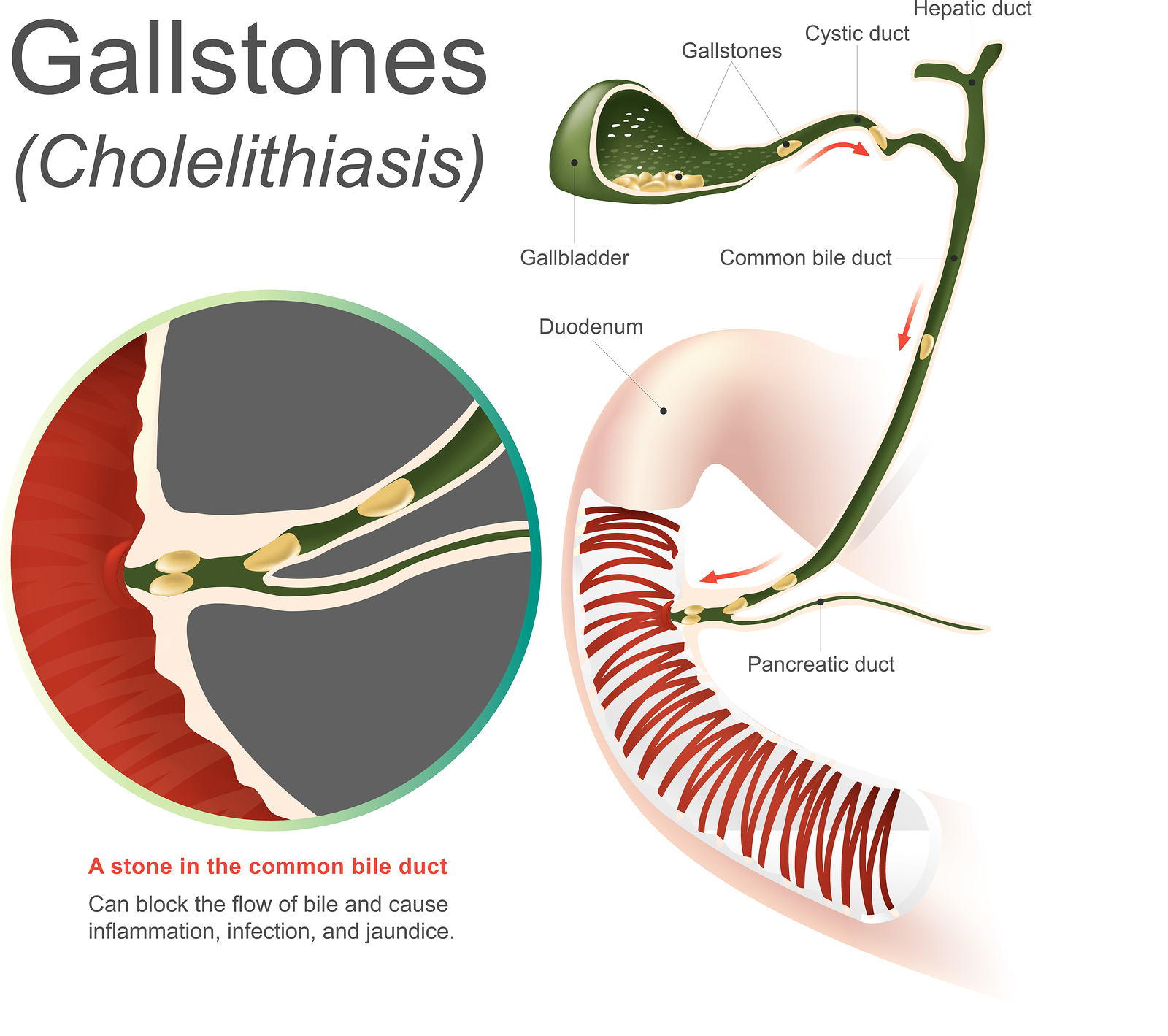

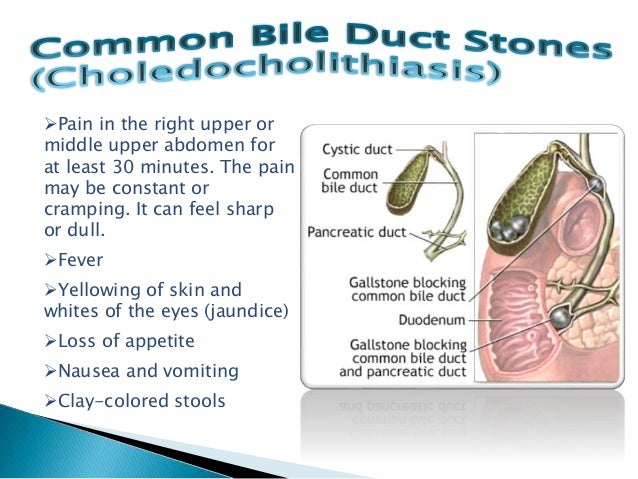 If pancreatitis is caused by hallucinogens, alcohol, or drugs, they should be discontinued.
If pancreatitis is caused by hallucinogens, alcohol, or drugs, they should be discontinued.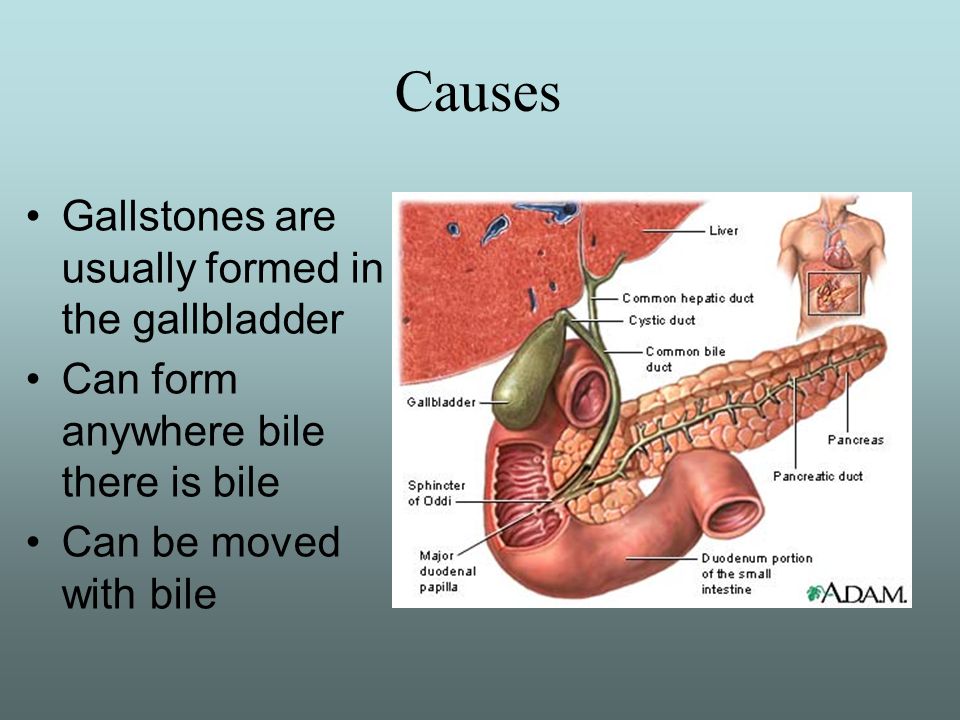

 Tumors can lead to impaired bile flow and cause a variety of symptoms.
Tumors can lead to impaired bile flow and cause a variety of symptoms. It is necessary to avoid fatty, too spicy, canned, smoked and pickled foods that lead to dysfunction of the gallbladder and liver. At the same time, it is recommended to consume a large number of vegetables, fruits, greens, lean meat and fish, as well as dairy products rich in calcium.
It is necessary to avoid fatty, too spicy, canned, smoked and pickled foods that lead to dysfunction of the gallbladder and liver. At the same time, it is recommended to consume a large number of vegetables, fruits, greens, lean meat and fish, as well as dairy products rich in calcium.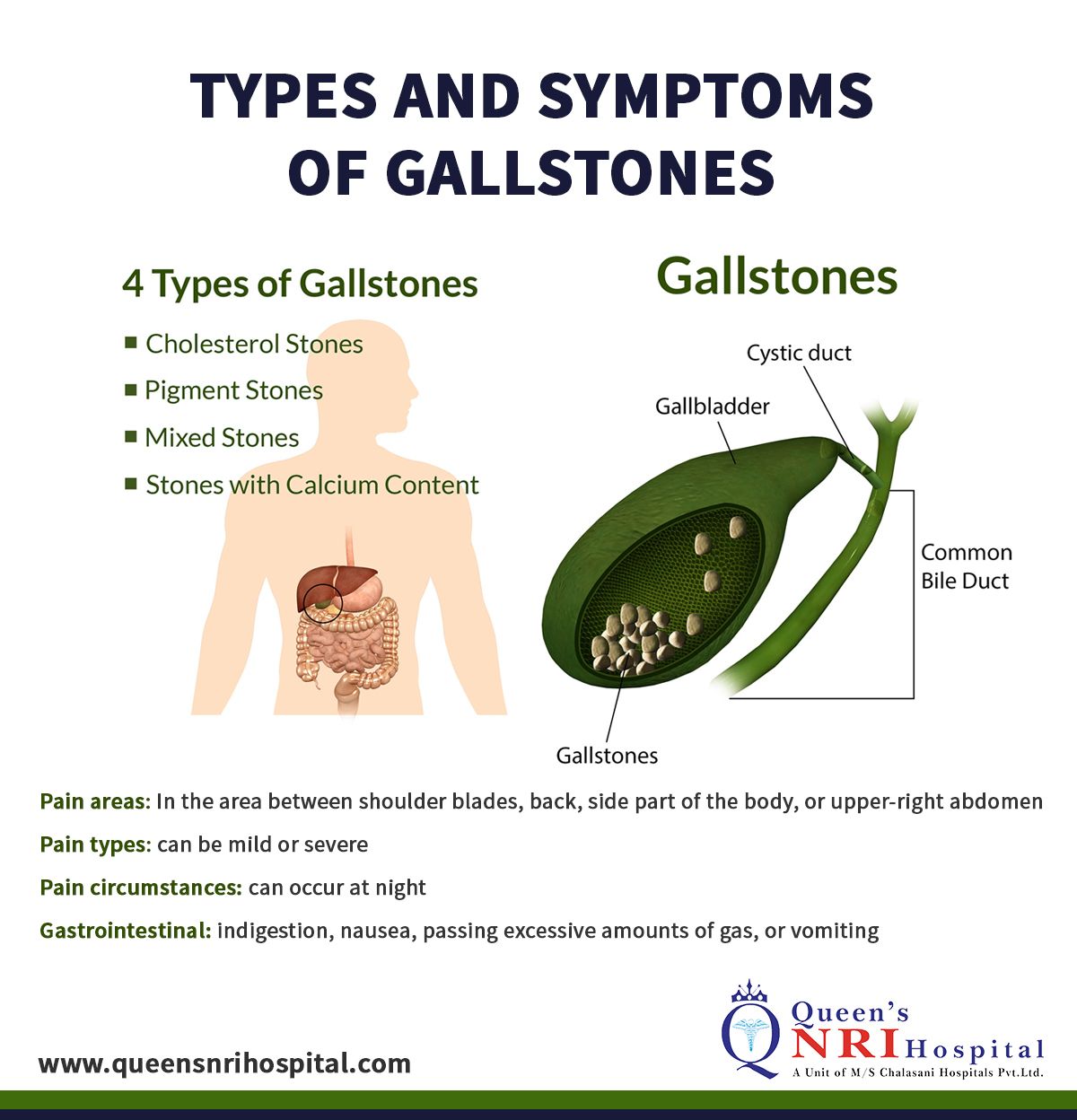 It is recommended to undergo a medical examination at least once a year and follow all doctor’s prescriptions.
It is recommended to undergo a medical examination at least once a year and follow all doctor’s prescriptions.